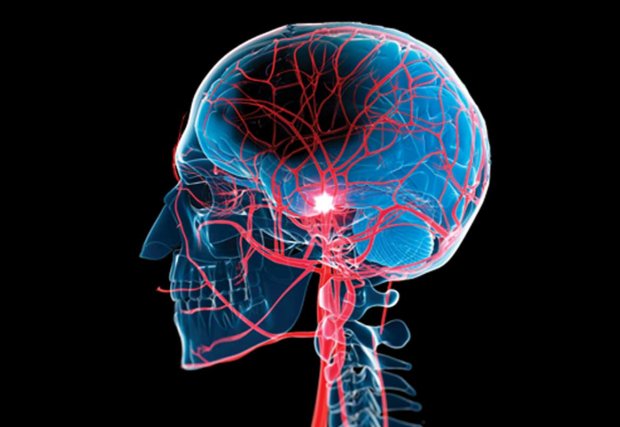All strokes are serious medical emergencies, but not all strokes are the same. The most common type of stroke is an ischemic stroke, which occurs when there is a blockage in a vessel supplying blood to the brain. When one of the major arteries of the brain is blocked, this is considered a large vessel occlusion or LVO stroke. This type of stroke tends to be more severe, and the treatment recommended is available only at certain hospitals, says interventional radiologist Raj Agrawal, MD. He is a physician on staff at Centennial Hills, Spring Valley and Valley Hospitals – which are all specially equipped to treat LVOs.
What are the symptoms?
LVO strokes can have the same symptoms outlined in the BE FAST acronym below, as well as certain other symptoms that EMS workers are specially trained to detect. For example, patients may display certain abnormal eye movements, or be unable to recognize a person or an object. It’s extremely important that people call 911 right away at the first signs of a possible stroke, so that emergency responders can make an assessment and provide transport to a hospital that is equipped to provide the best possible treatment.
What does treatment entail?
A procedure called a mechanical thrombectomy is strongly recommended for treating LVO strokes, says Dr. Agrawal. This involves making a small incision, usually in the groin, and threading a catheter with tiny instruments to the site of the blockage to retrieve the clot. Having access to this advanced care can support better outcomes and recoveries, with less risk of serious disabilities like paralysis, and greater return to normal functioning.
Henderson Hospital recently earned certification as an Advanced Primary Stroke Center. This certification is held by all six Valley Health System hospitals and recognizes centers that make exceptional efforts to foster better outcomes for stroke care.
B.E. F.A.S.T.
Recognizing the symptoms can help save your life or someone else’s life. Just B.E. F.A.S.T.
- BALANCE: Does the person have a sudden loss of balance or coordination?
- EYES: Has the person lost vision in one or both eyes or have they had sudden double vision?
- FACE: Ask the person to smile. Does one side of the face droop?
- ARMS: Ask the person to raise both arms. Does one arm drift downward?
- SPEECH: Ask the person to repeat a simple phrase. Is it slurred or strange?
- TIME is critical! If you see any of these signs, call 911 immediately.

